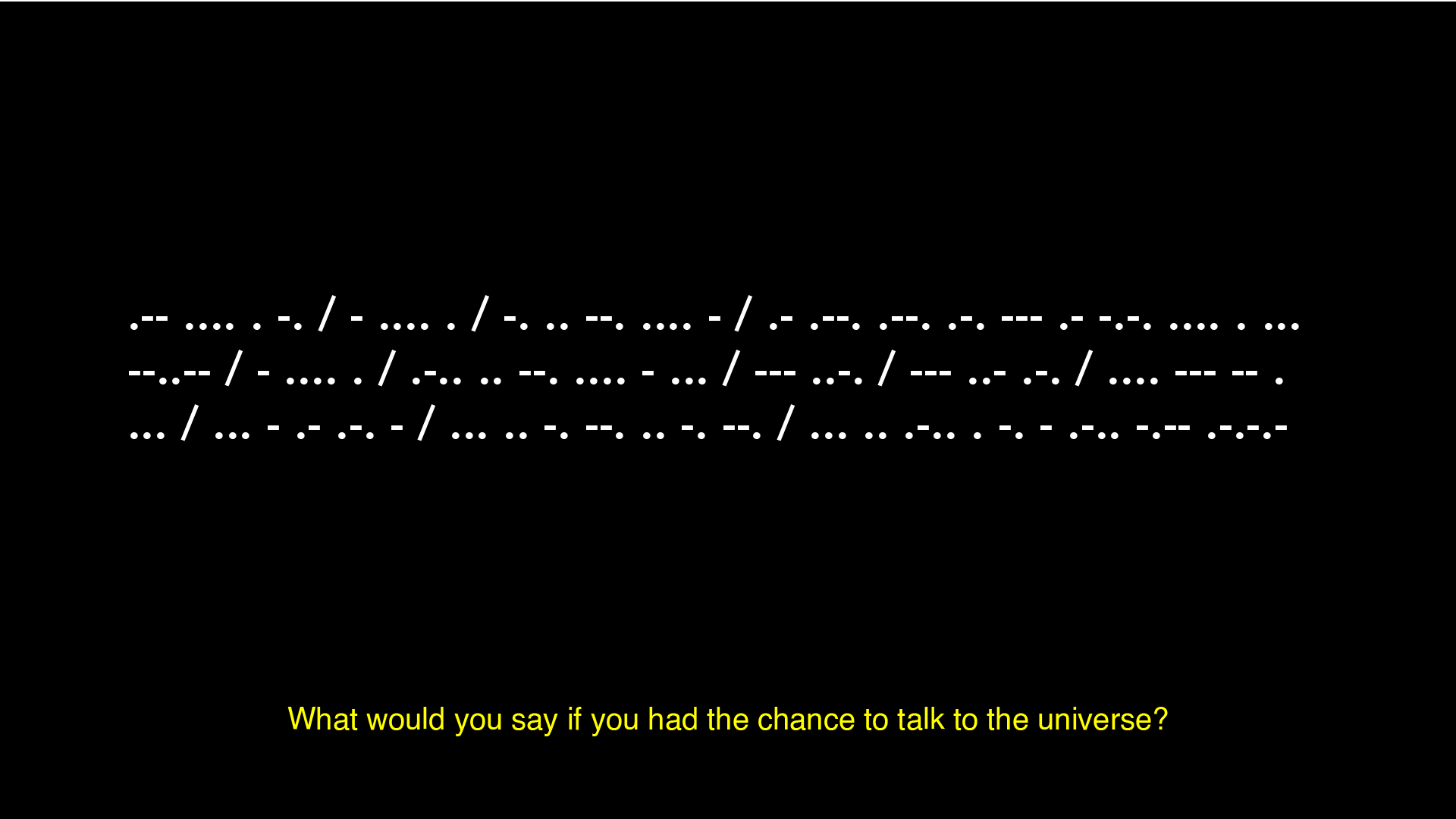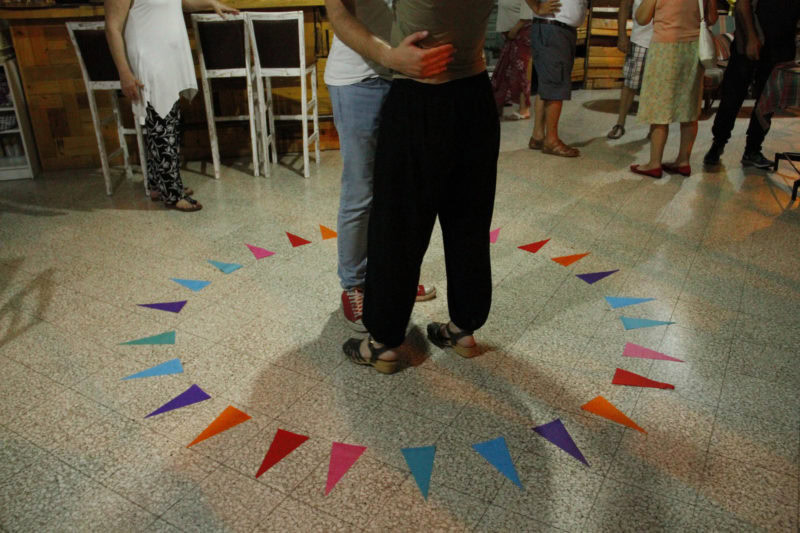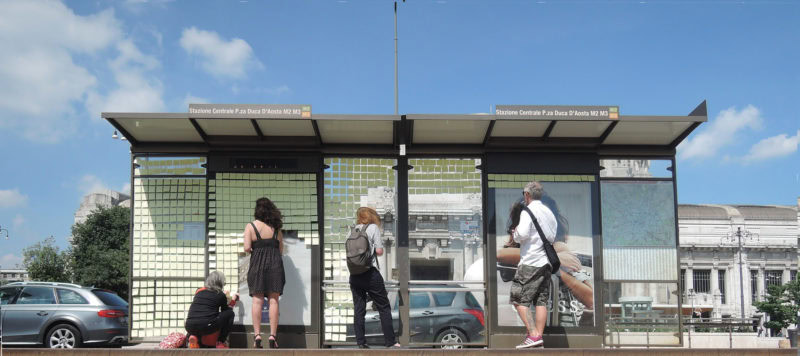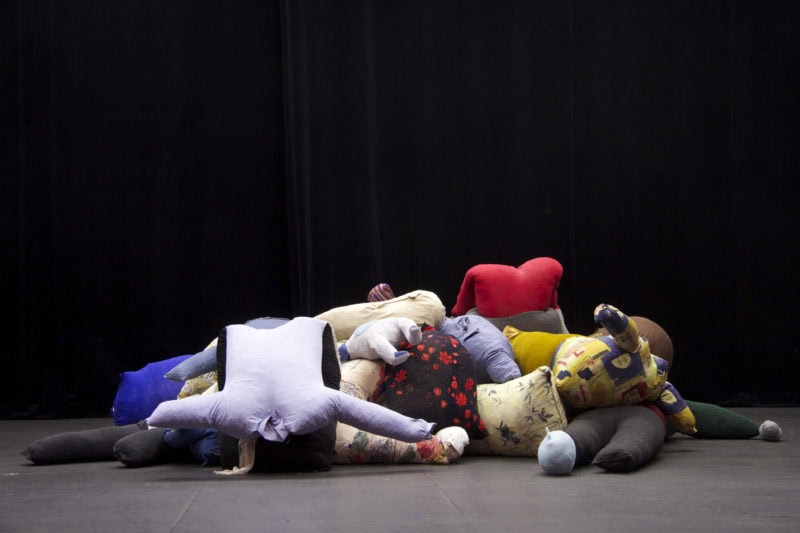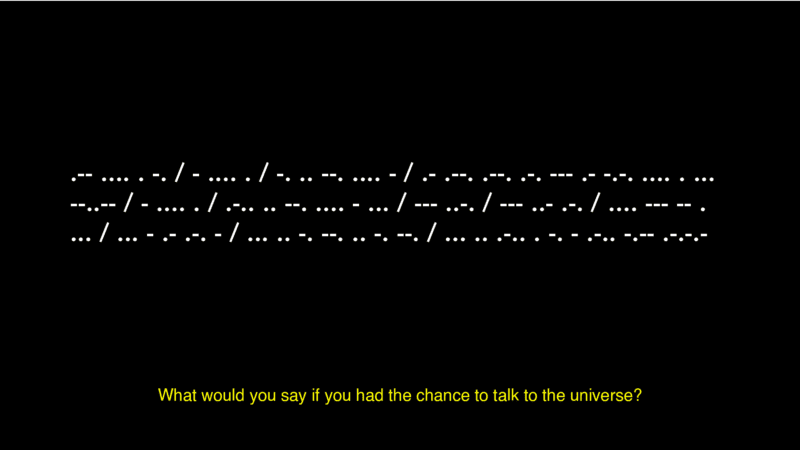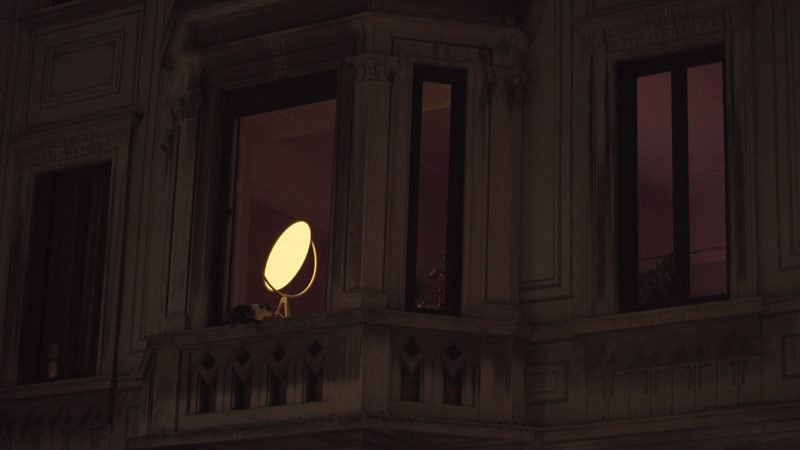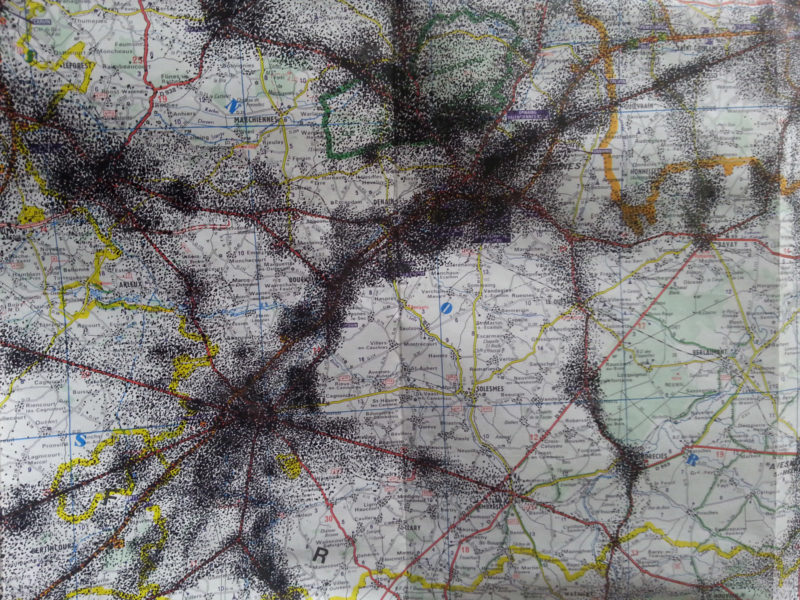The project #TalkingToTheUniverse by artist Sophie Usunier feels like a game, as often happens in the world of art. Sophie invites us to transform our words into light, and the houses we live into displays open to the street. It doesn’t take much: a lamp and Morse code. Light, which embodies a natural power of communication, is the medium through which people’s voices silently take shape.
With #TalkingToTheUniverse, Sophie Usunier encourages us to be part of an idea, with an honest open call to take part in the conversation, launched symbolically by Flos, a brand whose heritage is all about light, which believes in this initiative to support creativity, culture, and social togetherness.
#TalkingToTheUniverse invites us to reflect on the current time and historical moment, which began in March 2020 as the world found itself facing a pandemic for which the only known cure is human isolation. A moment of impasse, where the world finds itself confined at home. Physical, spatial, social, and emotional confinement. In response to this, the French artist has identified a method that allows her to continue expressing herself communicating with others.
Through this interview, curated by Rossana Ciocca, we discover her body of work and we learn more about her approach towards art which is unique and multidisciplinary, involving nature, animals and earth elements.
Many of your artworks have both a relational and participatory nature. They are often projects developed during artistic residencies that go on to become practices within your work. Beyond the process, what remains as an artwork?
The work remains in the gesture made in the moment, the meetings, the sharing, the experience, and the memory of its creators. We might define it as art lived in the present of the action. As with all artistic actions or performances, everything plays out in the present, in being there, in the surprise and reception of the experience. Traces sometimes remain in the form of photography or video, of course, but the feeling will never be the same as experiencing it in the moment. Everything is always evolving.
You often use architectural elements in your interventions: houses, sometimes urban elements, or public environments as relational displays of your work; is this an aesthetic choice or an essential part of the artwork?
What does it mean to inhabit a space? When do we inhabit it? How do we inhabit it? In French, a person can also be “inhabited”, as though to mean that the space contains a soul.
For me, space is synonymous with a cell, in both its architectural and biological definition. A place that I “inhabit” with an artistic installation often becomes a metaphor for our body, in the installation I would so much like that you remembered, for example, where space symbolically becomes our brain and post-its represent the many thoughts we gather inside ourselves, finally with some semblance of order. Did you know that over 50,000 thoughts cross our minds every day? Only a few of them remain in our memory, the thoughts captured on the post-its become an accumulation of thought-cells that create memory, a collective memory. I would so much like that you remembered and Urban blog follow the same protocol: I use the same process on architectural structures or bus shelters (waiting places) and that is how those places becomes spaces of the mind, spaces of memory, or body and soul.
The site-specific artwork The flow of things becomes a map that tells us a story. Using the signs that time has created on old abandoned walls, I highlight the cracks with ink and water, creating a new surface. It is a delicate trace, almost invisible, yet it creates a new epidermis.
The five senses – sight, touch, taste, smell, and hearing – seem to be fundamental in your work, which do you prefer and why?
Touch, smell, hearing, sight, and taste are the senses that allow us to perceive and discover the external world. Man is essentially an antenna, always tuned in and ready to receive the surrounding world. First the senses and then our own curiosity allow us to discover who we are, what we like, and what we don’t.
We are multi-sensory and “multi-sensual” beings. I like to use the term sensuality because it defines our being receptive to physical sensations. It is only through the five senses that we truly understand the world, if one of the five were to fail, a part of us would never know certain sensations. Many people today have atrophied their use of the senses without realising it.
Human sensuality, on the other hand, represents openness to the world and to others, it allows us to live the present with intensity, amplifying our contact with the world and relationships with others. It is like a journey towards ourselves, for ourselves, in full consciousness. I am sensitive and empathic; I use all my senses when I can.
How and when was #Talkingtotheuniverse born? What have you learned during this historical moment?
#Talkingtotheuniverse was born in 2017 when the group Cose Cosmiche invited me to Milan to organise an action within a curatorial project that was developed over the course of a day on a bus along the SS36 state road. Several stops were planned on route and the artist would activate their performance at each stop.
In addition to the artists, philosophers and astrophysicists were invited to give thematic lectures alternating with the actions. During this project I performed Talking To The Universe both on the bus and in an historical lamp shop. The idea was simple: talking to the universe, sending messages through a method of communication that we all know.
I’m sure that during these weeks of confinement, loneliness, and caring for ourselves and others, #Talkingtotheuniverse will spread by word of mouth, passing along bright messages and lighting up our windows in the darkness of the night, creating that cheerful, beneficial and carefree contact that we all need.
It feels as though we have gone through Alice’s looking glass right now. The world is still the same, but it is no longer the same; we must give ourselves the chance to see the world in which we have lived until now from a different angle, finding a new balance within ourselves and in the world.
A large part of your work revolves around nature, maps, and routes, what is it that fascinates you about them?
Nature is dear to me, she is like my traveling companion, she makes me feel good and centres me when my emotions are fluctuating. I just have to take a walk and I feel whole again.
I have a contemplative nature, I listen to birds even though I don’t understand them, I am fascinated by starlings when they are ready to migrate: the beauty of their rhythm, their singing and their flight, which becomes pure space and looks like breathing.
Birds in the air move without borders, without barriers. Three years ago, I made an artwork on an old paper map, I added many black ink dots, as though they were migrations from city to city, street after street, until they reached the sea and crossed it, redesigning the physical space of the paper. The map suddenly appears whole, made of single different cells.
With the use of GPS and mobile phones, geographical maps have dematerialised. Only paper maps truly take you on a journey and activate your imagination and fantasy: you fold them and open them again. When you fold that corner, they invite you to write and draw on them as though it was a story within a story.
All my art starts from a fragment, from a dot, sometimes even from a post-it or from a lamp, but the work is not formed within the single beat but in the group or the whole that shapes it, the choral action is the whole.
You use all media: photography, video, performance, installation, and more, and you have identified the mask as one of the archetypes of your work, what does it represent in your research ?
I often use masks in the shape of an animal, the simple and classic masks made for children. Part of me is certainly very much connected to La Fontaine and Aesop and moralistic fairy tales, full of common sense and humour; they are texts that show great knowledge of nature and human ambiguity, every animal is the representation of a metaphor.
I like everything about masks, transformation and metamorphosis, the idea of being whoever I want to be, of being able to hide but also to look inside myself. That hidden face, that part of us that we would never see without a mirror but the mirror reflects the image upside down…
Who am I, who are you? is a video that I made with children from a school in Metz. It is an artwork created for the International Children’s Rights Day, and it explores our identity: it might be me behind the mask or someone else. In the video, I used simple white masks with the face of a neutral human being to reinforce the idea that we are all the same. Sometimes I make the masks myself, this was the case for Paper News (2017) where the mask is from exactly 365 printed newspapers: a whole year reduced mostly in confetti and masks as if to emphasise that everything passes.
New news takes the place of old news, day after day, the ephemerality of things and the flow of images moves on and is gradually overtaken by more news, until everything seems ephemeral. Until everything feels like satire.
This is a game for everybody. Use your favourite lamp to spell a word that is meaningful tro you. Film it. Share it. Talk to the universe.
